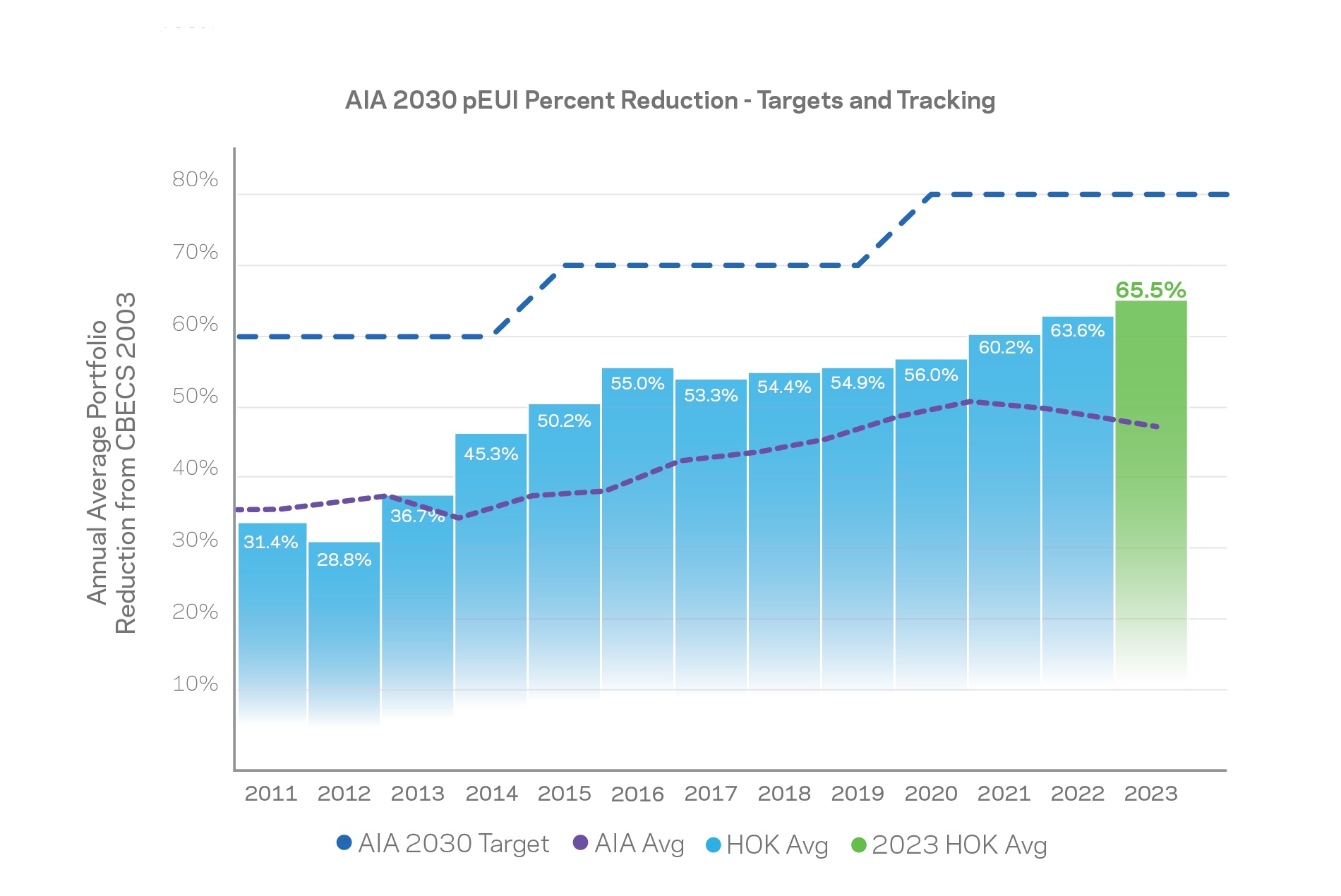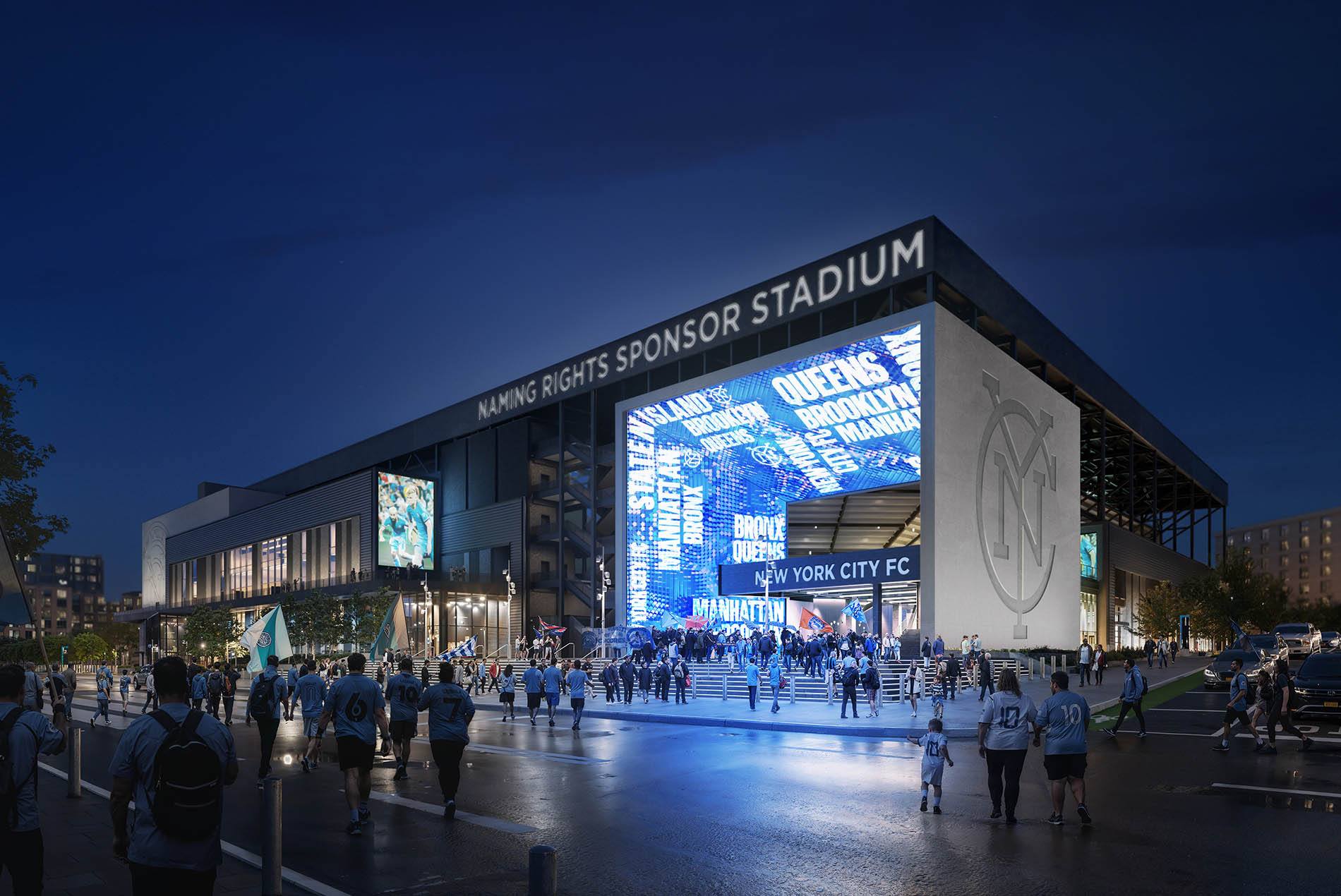HOK has announced significant progress toward achieving a carbon-neutral portfolio, exceeding energy reduction targets set by the American Institute of Architects (AIA) well ahead of the 2030 deadline.
In 2023, HOK projects achieved a 65.5% reduction in energy use intensity (EUI) compared to baseline levels, significantly surpassing the AIA’s 50% average. This marks a major step in the firm’s longstanding commitment to the AIA 2030 initiative, which targets net-zero fossil fuel use in new buildings and renovations by 2030.

The AIA’s initiative sets a challenging standard, particularly for firms like HOK that specialize in large-scale, complex projects like hospitals, airports, stadiums, laboratories and major renovations.
“Our progress demonstrates that high-performance design and environmental impact reduction are not mutually exclusive,” said Anica Landreneau, ASSOC. AIA, LEED AP BD+C, WELL AP, HOK’s director of sustainable design. “We’re proving this is achievable even for complex projects, without heavily relying on grid decarbonization, building electrification or renewable energy resources.”
 New York City FC’s new stadium will be the first fully electric soccer stadium in Major League Soccer and the first fully electric professional sports stadium in New York City.
New York City FC’s new stadium will be the first fully electric soccer stadium in Major League Soccer and the first fully electric professional sports stadium in New York City.
HOK first achieved operational carbon neutrality in 2022. In 2023, the firm’s design work created buildings that will remove about 47.6 million metric tons of CO2 from the atmosphere over their lifespan.
HOK addresses both operational carbon (from building use) and embodied carbon (from materials and construction). Structural systems can account for more than half of a building’s lifetime carbon footprint. The firm is researching new techniques and conducting life cycle assessments (LCAs) on most projects to optimize structural choices, In 2024, HOK expects to perform LCAs on all of its projects.
The firm’s Interiors group has launched a Sustainable Material Tracking initiative that integrates human health and environmental impacts into its interior design process. By analyzing a product’s embodied carbon, chemical hazards and circularity potential, this data-driven approach empowers HOK’s designers to select healthy, ethically sourced materials. Since 2021, the number of HOK projects using this system has grown nearly 400 percent, encompassing 46 percent of all interior work in 2023.

USC’s new Viterbi School of Engineering Human-Centered Computation Hall incorporates green technology and will be the campus’s first building to achieve LEED Platinum certification.
Landreneau recently joined Kimberly Dowdell, HOK’s director of strategic partnerships and the 2024 AIA president, at the United Nations Buildings and Climate Global Forum in Paris. “Buildings are responsible for over 34 percent of global energy demand and approximately 37 percent of energy-related CO2 emissions,” Landreneau said. “Focusing on carbon impact through a ‘whole life’ lifecycle perspective and designing for circularity, reuse and resilience is key to change.”
HOK’s updated Climate Action Plan, outlining more details about its push toward AIA 2030 goals, is scheduled for release later this year.
